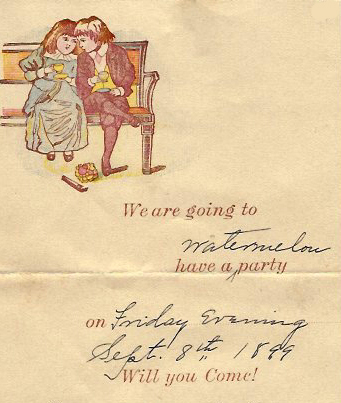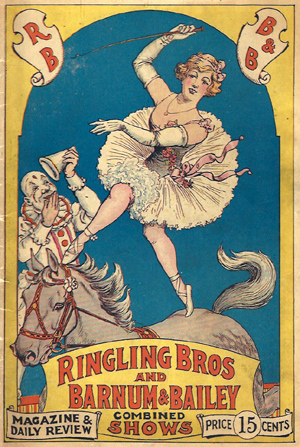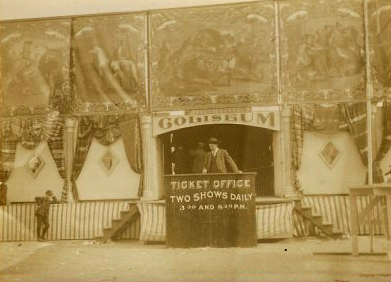On this August 3, National Watermelon Day, we wonder what Kentucky summers would be without this delectable treat, or the role that it has historically played in socializing and courtship. We’re sure that in 1899, Virgie Talbert of Nicholasville didn’t pass up John Chambers’s invitation to a watermelon party in Wilmore, Kentucky. Nor did 20-year-old Josephine Walker decline her share of sweet slices at the 1884 Adair County Fair. Sometime in the 1890s, Lucye Wolcott of Muhlenberg County teased her young suitor about a competitor’s bid for her company. “Mr. Morgan invited us over to share his lovely melon,” she coyly reported, and “naturally we did not decline.”
In 1863, 11-year-old Elizabeth Gaines moved with her family from Bowling Green to a farm near Hadley, Kentucky. After getting used to her new rural surroundings, she grew to enjoy fishing, hunting for wild nuts and grapes, and horseback riding. One day, she and her friend Mary rode by the farm of George Washington Cherry, the father of WKU’s first president, Henry Hardin Cherry, where they spied a large watermelon patch. Mary decided she wanted one, and sent Elizabeth over the fence to retrieve it. When she returned, the two girls “burst it open” and devoured it. At first, Mary teased Elizabeth into believing that the elder Cherry would find out and complain about his purloined melon, but later assured her worried friend that he would not take offense at their impromptu feast.
Click on the links for finding aids to these collections that feature watermelons, part of the Manuscript & Folklife Archives of WKU’s Department of Library Special Collections. For more, search TopSCHOLAR and KenCat.



